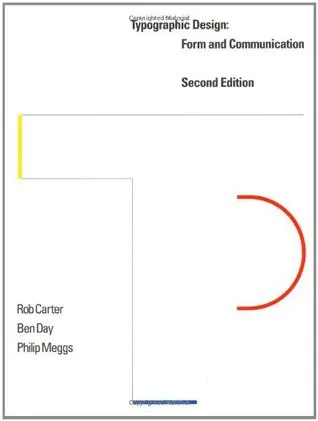Typographic Design: Form and Communication
By (author): "Philip B. Meggs, Rob Carter"
Publish Date:
January 1st 1993

ISBN0471284300
ISBN139780471284307
AsinTypographic Design: Form and Communication
Original titleTypographic Design: Form and Communication
Typographic Design: Form and Communication Second Edition Rob Carter Ben Day Philip Meggs The best-selling Typographic Design: Form and Communication filled an important need by providing designers and students with a comprehensive overview of all aspects of designing with type. It was selected for the prestigious American Institute of Graphic Arts Book Show. Now, this newly expanded edition is revised and updated to address the latest developments in electronic page design, digital type, and the revolutionary creative possibilities unleashed by these important advances. This second edition covers all aspects of designing with type, including basic terms, classification, and an extensively revised section on visual organization and typographic space. Electronic page design, also called desktop publishing, has been added to the chapter on technology. The widely acclaimed chapter on legibility has new material about legibility and the computer. Nearly 550 photographs and line images provide readers with a keen understanding of typeface usage and clarify typographic fundamentals. Theoretical and structural problem-solving approaches by design educators across America reveal underlying concepts about typographic form and message. Case studies by leading professionals provide insight into the typographic design process. Type specimens representing major categories enable readers to study typographic classification and form subtlety. Four pictorial timelines show the evolution of typography and writing within the context of world events, architectural developments, and art history. These chronologies range from the origins of writing over 5,000 years ago to the latest typesetting technology. They take readers on a fascinating journey through the invention of movable type, explosion of new typographic forms during the industrial revolution, aesthetic concerns of modernism, and functional and expressive communications in the post-industrial world. Typographic Design: Form and Communication, Second Edition, remains the most comprehensive reference available on the use of type. It will continue to be the text of choice for typography courses, as well as an essential reference for professional designers.